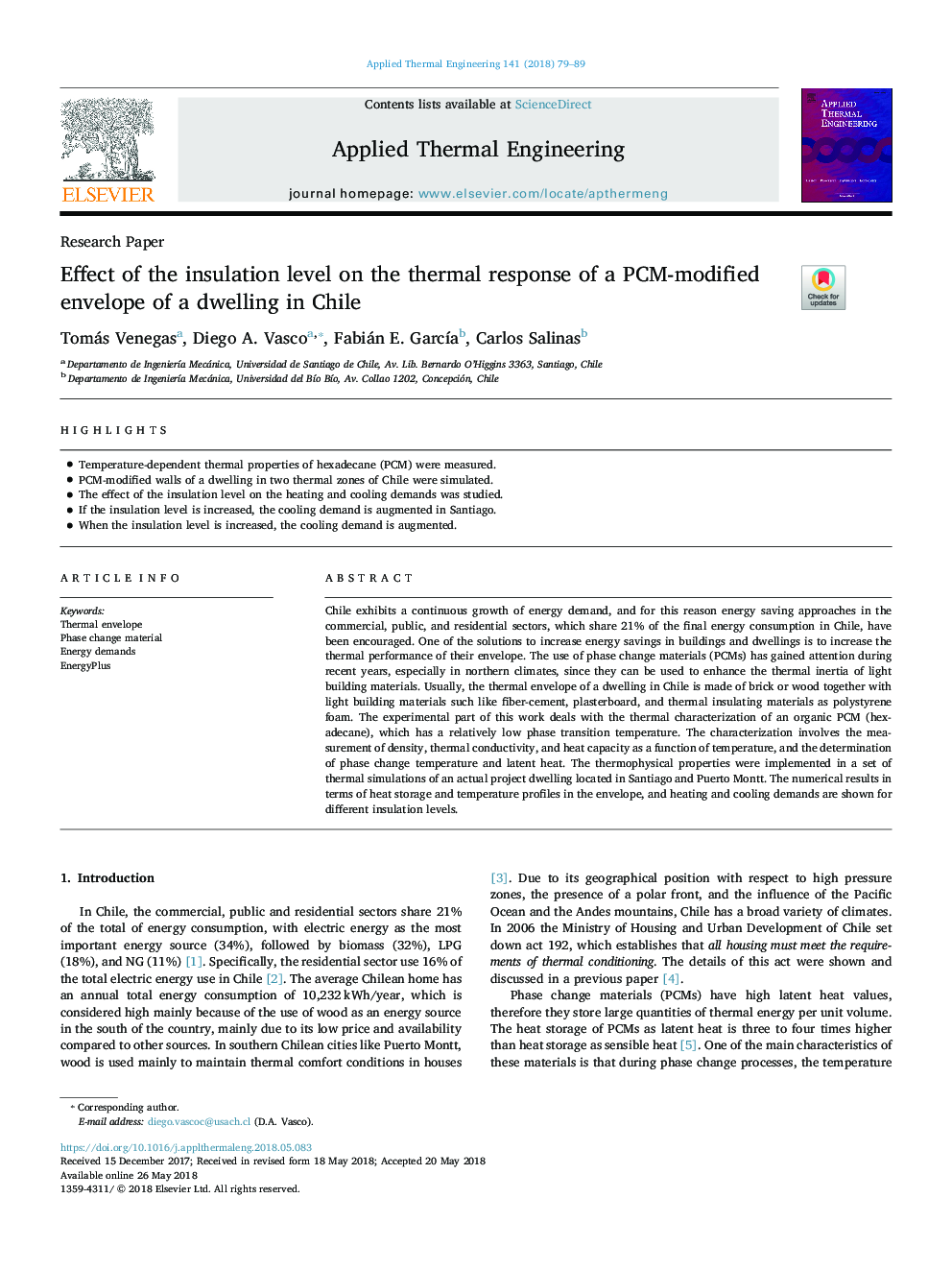| Article ID | Journal | Published Year | Pages | File Type |
|---|---|---|---|---|
| 7044871 | Applied Thermal Engineering | 2018 | 11 Pages |
Abstract
Chile exhibits a continuous growth of energy demand, and for this reason energy saving approaches in the commercial, public, and residential sectors, which share 21% of the final energy consumption in Chile, have been encouraged. One of the solutions to increase energy savings in buildings and dwellings is to increase the thermal performance of their envelope. The use of phase change materials (PCMs) has gained attention during recent years, especially in northern climates, since they can be used to enhance the thermal inertia of light building materials. Usually, the thermal envelope of a dwelling in Chile is made of brick or wood together with light building materials such like fiber-cement, plasterboard, and thermal insulating materials as polystyrene foam. The experimental part of this work deals with the thermal characterization of an organic PCM (hexadecane), which has a relatively low phase transition temperature. The characterization involves the measurement of density, thermal conductivity, and heat capacity as a function of temperature, and the determination of phase change temperature and latent heat. The thermophysical properties were implemented in a set of thermal simulations of an actual project dwelling located in Santiago and Puerto Montt. The numerical results in terms of heat storage and temperature profiles in the envelope, and heating and cooling demands are shown for different insulation levels.
Related Topics
Physical Sciences and Engineering
Chemical Engineering
Fluid Flow and Transfer Processes
Authors
Tomás Venegas, Diego A. Vasco, Fabián E. GarcÃa, Carlos Salinas,
